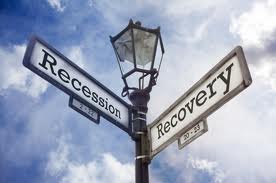How is the New Economy treating your business?
If you own or run a business today you know we’re experiencing an economy that is different than anyone has seen in the past. It is five years since we went through the worst economic crisis since the Great Depression.
The Great Recession brought us the New Economy
Now called the Great Recession, we saw:
• The loss of 8.7 million jobs
• More than half of adults lost a job, took a pay cut or had hours reduced
• Trillions of dollars of wealth was lost where almost everyone was touched
• Home values dropped dramatically nationwide, at one point 11 million homeowners were upside down on their mortgage and tens of thousands lost their homes
• The United States weren’t the only country impacted by the economic crisis. Financial uncertainty was repentant in Europe as nine countries saw their standard and Poor’s credit rating downgrade in 2012
We’re still in”Recovery”
In spite of numerous efforts by the government to help the battered economy get back on its feet, the “recovery” is still a work in progress. While some business sectors and regions of the country have found their footing, others are still digging themselves out of a hole.
Here is a glimpse of economic indicators that give both hope and provide continued warning signs:
• We’ve regained the 8.7 million jobs that were lost but many were replaced with jobs that pay less sometime much less. Manufacturing and construction jobs that pay around $25 an hour have been “replaced” with retail and restaurant jobs where pay is $12-16.96.
• Unemployment has dropped from nearly 10% to 6.4% in May 2014. Unfortunately the plight of the long term unemployed continues to worsen. 3.4 million Americans have been out of work for more than 6 months. This is two and a half times what is was pre-recession. Many who have found work did so with part time jobs or short term jobs. While many others have simply left the labor market and stopped seeking employment.
• College graduates are feeling the strain of the economy as unemployment among recent college graduates is still above the national average at 7.6%.
• Compounding the challenges recent graduates face looking for work is their mounting student loan debt. In the last ten years this number has grown from $260 billion to 1.1 trillion. The average student graduates with about $30,000 in debt. Many predict this to be the next “bubble” to send shock wave to our economy.
• Although the housing market is improving most metro areas find their home prices 65-80% of their peak value. The $2 trillion equity value lost may never be recovered.
• Household net worth increased to a record high of $81.7 trillion. That’s the good news. The bad news is only the very wealthy benefited. The rich got richer and everyone else got poorer.
• “Small business optimism continues its winter hibernation with the latest Index dropping 2.7 points to 91.4, a reading that historically has been associated with recessions and periods of sub-par growth. The one highlight in the January (2014) survey, a surge in hiring plans, was crushed in February by the continued onslaught of a wintry recovery now in its 5th year.” – Bill Dunkelberg, NFIB Chief Economist
• The US is still the global economic leader and is moving along better than much of the world especially debt-ridden Europe and ever- stagnant Japan. However, our growth is only moving at a 2-3% pace.
• Picking up the United States lack of growth has been China. They’ve been growing at a 9.5-10% rate over the past few years. This number is trending downward this year as economists forecast growth at 7.5%. As China’s role in the global economy continues to grow (They are now the world’s biggest trader of goods), every economic bump they experience will be felt everywhere.
Silver linings in the New Economy
In spite of these challenges many industries and companies large and small are experiencing record growth and profit. For example:
• After stumbling badly in 2011, Netflix found success as a non-network by offering original television programming. Their subscribers exceeded 40 million and quarterly earning quadrupled.
• Entertainer Beyoncé turned traditional album marketing on its ear by releasing an iTunes exclusive album in the dead of night with no promotion. Its success was unprecedented. In a social media world, free publicity is the best kind of publicity, and the combination of surprise and artificial scarcity was a great way to get people to actually open their wallets for content.
• AMP Americas is a Chicago-based company that makes compressed natural gas. While the alternative fuel market already has plenty of innovative business models,” this one truly stands out: Its fuel is converted from cow manure.
• Lexington, N.C.-based Lolly Wolly Doodle, earns more than $10 million in annual revenue. Two factors lie at the heart of their success: an innovative manufacturing approach known as “just-in-time” manufacturing and a commitment to social commerce. Lolly Wolly Doodle currently does 60 percent of its sales through Facebook and the remainder through its website.
Why are companies like RadioShack, Pennies, RIM and many others seem to be moving from one crisis to another while others find the opportunity that leads them down the path of success?
Let me know about your experience with the New Economy.

